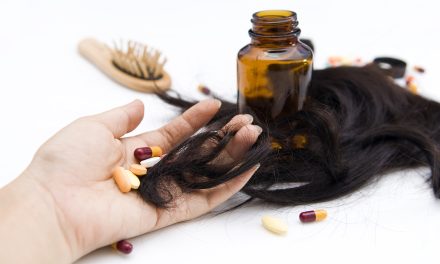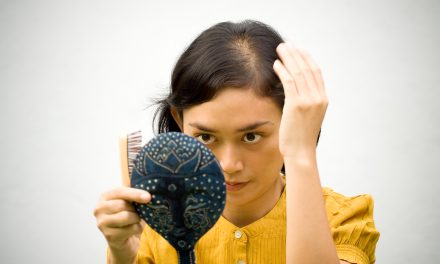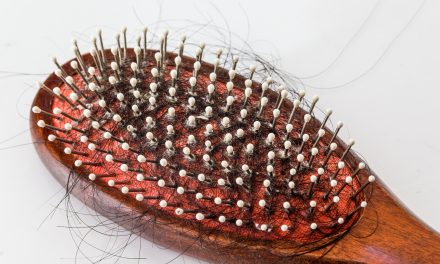Women’s hair loss can be a distressing issue that affects self-esteem and confidence. However, understanding the root cause and exploring treatment options can help mitigate its effects. There are various reasons for hair loss in women, ranging from hormonal changes to medical conditions and medications. It’s important to understand the underlying cause before seeking the most suitable treatment, which might involve conventional medicine, alternative therapies, or lifestyle adjustments.

Getting a proper medical diagnosis is crucial as it helps pave the way for suitable treatments and preventive measures to address hair loss in women. A dermatologist or a medical professional can help identify the cause and recommend conventional treatments like medications, surgical procedures, or addressing the contributing factors. For some, alternative therapies or lifestyle changes can also play a significant role in managing hair loss. Furthermore, cosmetic options are available for temporary solutions, giving women the confidence to face their daily lives while undergoing treatment.
Key Takeaways
- Addressing women’s hair loss requires understanding its root cause and seeking proper medical diagnosis
- Treatment options can range from conventional medications to alternative therapies and lifestyle changes
- Cosmetic solutions provide temporary relief, allowing women to maintain their confidence during the treatment process.
Understanding Hair Loss in Women
Defining Alopecia
Alopecia refers to the medical term for hair loss that affects both men and women. However, hair loss in women is less severe and often presents with a different pattern than in men. Female pattern hair loss, also known as androgenetic alopecia, is characterized by thinning hair on the scalp while retaining the hairline making it less conspicuous compared to male pattern hair loss.
Common Causes of Hair Loss
There are several possible causes of hair loss in women, including:
- Hormonal imbalances: Polycystic ovary syndrome (PCOS) and pregnancy often cause hormonal changes that can lead to hair loss.
- Nutritional deficiencies: A lack of essential vitamins and minerals, such as iron or biotin, can contribute to hair loss.
- Stress: Physical or emotional stress can trigger hair loss, especially telogen effluvium, which causes a temporary increase in hair shedding.
- Thyroid disorders: Both hypothyroidism and hyperthyroidism can lead to hair loss.
- Medications: Some medications, such as blood thinners and oral contraceptives, may cause hair loss as a side effect.
The Impact of Aging and Menopause
The aging process and menopause significantly impact hair loss in women. As women age, the rate of hair growth slows down, leading to further hair loss. Additionally, hormonal changes during menopause can cause hair thinning or bald spots, affecting up to two-thirds of postmenopausal women. An increase in androgen levels during menopause contributes to female pattern hair loss, leading to a reduction in hair density.
It is essential for women experiencing hair loss to consult a dermatologist or a healthcare professional to determine the specific cause and appropriate treatment options. Understanding the different types of hair loss and their underlying reasons can help women take proactive steps to address and manage their hair loss effectively.
Medical Diagnosis of Women’s Hair Loss
Consulting a Dermatologist
When experiencing hair loss, it is important to consult a dermatologist who specializes in hair disorders. They can determine the cause of hair loss and recommend appropriate treatments based on your specific condition. A dermatologist will conduct a thorough examination of your scalp, ask about your medical history, and inquire about any family history of hair loss.
Blood Tests and Scalp Skin Tests
In diagnosing women’s hair loss, dermatologists often employ a combination of blood tests and scalp skin tests. These tests help to uncover any medical conditions that may be causing hair loss. A blood test can reveal hormonal imbalances, iron deficiencies, or thyroid issues, which may contribute to hair loss.
A scalp skin test can involve a pull test or a scalp biopsy. In a pull test, the dermatologist gently pulls several dozen hairs to see how many come out, helping to determine the stage of the shedding process. A scalp biopsy, on the other hand, involves removing a small sample of skin from the scalp and examining it under a microscope. This test can provide information about the health of hair follicles, aiding in the identification of conditions such as inflammation or fungal infections.
It is crucial to receive a proper diagnosis for hair loss, as the treatments could vary significantly depending on the underlying cause. By consulting a dermatologist and undergoing the necessary tests, women experiencing hair loss can begin their journey toward healthier hair and more confidence in their appearance.
Conventional Treatments for Hair Loss
Medications like Minoxidil and Finasteride
Minoxidil, the active ingredient in medications like Rogaine, is one of the most popular treatments for hair loss in women. It is an FDA-approved solution that is available over-the-counter in liquid, foam, and shampoo forms. To be most effective, it should be applied to the scalp once daily for women 1. Minoxidil helps to slow hair loss and promote hair regrowth by increasing blood flow to the hair follicles.
Another medication, Finasteride, is commonly used to treat hair loss in men but is not FDA-approved for women 2. However, some doctors may still prescribe it off-label for women under certain conditions, such as when hair loss is caused by a hormonal imbalance.
Low-Level Laser Therapy
Low-Level Laser Therapy (LLLT) is a non-invasive treatment for hair loss that uses light energy to stimulate hair growth. This therapy is usually available in the form of a handheld device or a laser comb. Both men and women can benefit from LLLT, although the exact mechanism by which it promotes hair growth is still not entirely understood 3. It is generally considered to be a safe and painless treatment option with few side effects.
Hair Transplant Surgery
For those seeking a more permanent solution to hair loss, hair transplant surgery might be the best option. Hair transplant surgery involves removing healthy hair follicles from one part of the body and transplanting them to the area of thinning or balding. There are two main methods of hair transplantation: Follicular Unit Transplantation (FUT) and Follicular Unit Extraction (FUE). Though it’s more invasive than medications and LLLT, hair transplant surgery can produce significant and long-lasting results for both men and women 4. However, it is essential to keep in mind that this procedure can be expensive, and recovery time can vary.
In conclusion, there are various conventional treatments for hair loss that can be effective for women. It is essential to consult a medical professional to determine the most appropriate treatment based on individual needs, as the cause of hair loss can vary. By exploring options such as minoxidil, laser therapy, and hair transplant surgery, women can find a treatment that works best for their specific situation.
Footnotes
Alternative and Supportive Therapies
Natural Remedies and Supplements
A healthy diet can play a significant role in promoting hair growth and reducing hair loss in women. Consuming foods rich in omega-3 fatty acids, zinc, biotin, and vitamins A, D, and E helps support hair growth. Consider incorporating foods such as salmon, spinach, avocados, and nuts into your diet.
Vitamins and supplements can also reduce hair loss in women. For example:
- Biotin helps improve keratin production, an essential protein for hair.
- Vitamin A promotes sebum production, which keeps the scalp moisturized, supporting healthy hair growth.
- Vitamin D aids in the creation of hair follicles, essential for hair growth.
- Iron prevents hair loss by stimulating the production of hemoglobin, which carries oxygen to hair follicles.
Scalp Care and Hair Growth Stimulation
Taking care of your scalp and promoting hair growth through stimulation can be helpful in reducing female hair loss. Use the following hair care practices to maintain a healthy scalp:
- Choose a gentle shampoo and conditioner, preferably sulfate-free. Sulfates can be harsh on the scalp and strip away natural oils.
- Avoid heat styling tools. Excessive heat can weaken hair strands and lead to hair loss.
- Limit chemical treatments such as hair dyes and relaxers as these can also weaken hair and irritate the scalp.
Additional scalp care techniques can help stimulate hair growth, for example:
- Scalp massage can improve blood circulation in the scalp, leading to increased hair growth. Use gentle, circular motions to stimulate hair follicles.
- Essential oils, such as rosemary and peppermint, can aid with scalp health. Rosemary oil has been found to be one of the best oils for promoting hair growth. Apply a few drops to the scalp, massage it in, and leave it for 15-20 minutes before washing it off.
- Onion juice might help in hair regrowth. Blend a few onions, extract the juice, and apply it to the scalp for at least 15 minutes before rinsing.
Impact of Lifestyle on Hair Health
Diet and Nutrition’s Role in Hair Health
A well-balanced diet plays a significant role in maintaining hair health. Consuming a diet that includes essential vitamins, minerals, and proteins can contribute positively to hair growth. For example, foods rich in vitamin A, such as carrots and sweet potatoes, help to maintain the production of sebum, the natural oil produced by the scalp to nourish hair. Meanwhile, omega-3 fatty acids found in foods like walnuts and fish can contribute to overall hair health1.
A Mediterranean diet, rich in raw vegetables and fresh herbs, can reduce the risk of androgenic alopecia, which is a common type of hair loss in women. Including foods rich in iron, such as spinach, and zinc, like pumpkin seeds, can also help to support hair growth and prevent hair loss2. Overall, it is essential to maintain a varied diet to ensure hair receives all necessary nutrients.
Stress and Hair Loss
Stress can have a profound impact on hair health, leading to hair loss in women. Telogen effluvium, a type of hair loss, can occur when the body experiences significant stress, causing hair to enter the shedding stage prematurely. Managing stress is crucial to maintaining healthy hair growth and preventing hair loss3.
Engaging in stress-relief activities, such as meditation, yoga, or regular exercise, can contribute to better hair health. Getting enough sleep is also crucial, as it allows the body to rejuvenate and recover from daily stressors. Maintaining a healthy work-life balance can further contribute to reducing stress, thus promoting healthier hair growth4.
In summary, focusing on a well-balanced diet and maintaining a low-stress lifestyle are vital factors in promoting hair health, preventing hair loss, and encouraging hair growth. Prioritizing overall well-being by practicing good hair care habits can significantly impact hair’s overall health.
Footnotes
The Role of Hormones in Hair Loss
In many cases, women’s hair loss can be attributed to hormonal imbalances. This section will explain the significance of hormones in hair loss and discuss potential hormonal treatments and considerations.
Understanding Androgenetic Alopecia
Androgenetic alopecia, also known as female pattern hair loss, is a common condition where hormones play a crucial role. It occurs due to the action of androgens, which are essential hormones for both male and female sexual development, including regulating hair growth1. One hormone in particular, dihydrotestosterone (DHT), can attach to receptors on hair follicles, causing them to shrink and eventually result in hair loss2.
This condition may be inherited, involving multiple genes3, and is often more noticeable during or after menopause due to changes in estrogen and progesterone levels4. Hormonal imbalances can accelerate hair loss by both directly affecting hair growth hormones and indirectly increasing the activity of hair loss hormones5.
Hormonal Treatments and Considerations
There are several hormonal treatments available that may help address hair loss in women. One commonly prescribed medication is spironolactone, also known as Aldactone6. This drug acts as an androgen blocker, reducing the effects of androgens on hair follicles by inhibiting DHT production7. It can help slow down hair loss and promote regrowth in some cases8.
While spironolactone can be an effective treatment for hair loss, it’s essential to discuss its use with a healthcare provider. Possible side effects may include dizziness, fatigue, and changes in menstrual cycles9. Furthermore, it’s crucial to address any underlying hormonal imbalances as part of a comprehensive approach to treating hair loss.
In summary, hormones play a significant role in women’s hair loss, particularly in cases of androgenetic alopecia. Understanding the impact of hormonal imbalances and exploring potential treatments like spironolactone can be crucial steps in addressing this common issue.
Footnotes
Preventing Further Hair Damage
Avoiding Harmful Hairstyles and Products
One of the most overlooked aspects of women’s hair loss is the role played by everyday hairstyles and hair products. Wearing tight hairstyles like ponytails, braids, or buns can cause tension on hair follicles, leading to hair breakage and even permanent hair loss. To minimize this damage, opt for looser hairstyles and allow your hair to rest.
Additionally, avoid using harsh chemicals and heat-styling tools on your hair. Limit the use of hair dyes, bleaches, and high heat hair dryers, as they can weaken and damage the hair shaft. Instead, opt for natural hair products and air-dry your hair when possible.
Reducing Scalp Irritation and Inflammation
Another key aspect of preventing further hair loss is to reduce scalp irritation and inflammation. An inflamed scalp can lead to hair follicle damage, which may result in hair thinning or hair loss. Some common causes of scalp irritation include harsh hair products, allergens, and skin conditions such as seborrheic dermatitis.
Here are some tips to help reduce scalp irritation and inflammation:
- Choose gentle, natural hair products that are sulfate-free and do not contain harsh chemicals.
- Wash your hair gently, massaging shampoo into the scalp rather than rubbing it into the length of your hair.
- Always use a conditioner to keep the hair moisturized and protected against damage.
- Avoid over-shampooing your hair, as it may strip the scalp of its natural oils, leading to irritation and dryness.
By making these changes to your hair care routine, you can help prevent further hair damage and give your hair the best chance of recovery. Keep in mind that it’s essential to consult with a dermatologist or healthcare professional if you experience severe or persistent hair loss, as it may signal an underlying medical condition.
Cosmetic Options and Care
Utilizing Wigs and Extensions
Wigs and extensions provide an instant solution to hair loss by giving the appearance of fullness and length. High-quality wigs come in synthetic and natural hair options and can be customized to match your natural hair color, texture, and style. Similarly, extensions can be a great way to add volume, length, and style to thinning hair. It is important to choose high-quality hair extensions and have them professionally applied to prevent further hair damage.
Some popular types of wigs and extensions include:
- Synthetic hair wigs – Made from synthetic fibers and available in various colors and styles.
- Human hair wigs – Made from real human hair and can be dyed, styled, and washed like natural hair.
- Clip-in extensions – Easily attached and removed, these extensions are perfect for daily use.
- Tape-in, sew-in, and bonded extensions – These options offer a longer-lasting solution, but require professional application and maintenance.
Adapting Hairstyling Techniques
Changing your hairstyling techniques can help improve the look of thinning hair and protect delicate strands from further damage. Avoid tight hairstyles, such as ponytails and braids, which can cause traction alopecia and worsen hair loss.
Instead, try embracing gentle styles that provide volume and texture, such as:
- Loose hairstyles – Opt for soft waves, curls, or straightened locks to avoid putting tension on the hair.
- Layered cuts – Adding layers to your haircut can create an illusion of volume, especially for wavy or curly hair.
- Color – Strategically placed hair color or highlights can also give the appearance of thicker, fuller hair. Consult a professional hairstylist to determine the best approach for your specific hair type.
- Volumizing products – Use lightweight, volumizing hair products such as mousses, serums, and sprays to provide lift and body without weighing down your hair.
Remember, proper hair care is crucial to maintaining the health of your existing hair and preventing further hair loss. Incorporating gentle hair care practices and considering the use of wigs, extensions, and adapted hairstyling techniques can help you regain confidence in your appearance while managing hair loss.
Considerations for Specific Hair Loss Types
Cicatricial Alopecia and Its Challenges
Cicatricial alopecia, also known as scarring alopecia, is a type of hair loss that results in permanent damage to the hair follicles, leading to permanent hair loss. This condition is characterized by inflammation in the hair follicles, which destroys them and replaces them with scar tissue. Treatment for cicatricial alopecia can be challenging, as the underlying cause may vary and the damage to hair follicles is often irreversible.
Some treatments for cicatricial alopecia may include:
- Anti-inflammatory medications to reduce inflammation in the hair follicles.
- Corticosteroids to suppress the immune system and reduce inflammation.
- Antibiotics to treat any underlying infections.
It is essential to consult a dermatologist for proper diagnosis and treatment to prevent further damage to the hair follicles.
Addressing Alopecia Areata
Alopecia areata is an autoimmune disorder that causes hair loss typically in small, round patches on the scalp. The immune system mistakenly attacks hair follicles, resulting in hair loss. Unlike cicatricial alopecia, hair loss due to alopecia areata can be temporary, and hair may regrow spontaneously or with treatment.
Some treatment options for alopecia areata include:
- Topical corticosteroids: These anti-inflammatory drugs can be applied directly to the affected areas to stimulate hair growth and reduce inflammation.
- Intralesional corticosteroids: Injections of corticosteroids directly into the affected areas can also help to suppress the immune system’s attack on hair follicles.
- Minoxidil (Rogaine): This over-the-counter medication can promote hair growth when applied to the scalp. According to the Mayo Clinic, women should apply it once daily while men should apply it twice daily.
In conclusion, understanding the specific types of hair loss and their causes is crucial when seeking appropriate treatment. While some forms of hair loss are reversible, it’s essential to consult a healthcare professional to address the underlying cause and receive proper guidance on effective treatment options.
Financial and Insurance Aspects
Cost of Treatments and Hair Loss Management
The cost of hair loss treatments varies depending on the chosen method, and individuals seeking treatment should be aware of the financial implications before committing. Minoxidil, an FDA-approved treatment for female pattern hair loss, is available over the counter in a 2% solution or a 5% foam. It is important to note that this option is typically more affordable compared to other treatments, including hair transplant surgeries.
Hair transplant surgery, one of the most expensive treatments, can range from several thousand dollars to tens of thousands. This option carries additional risks and requires a longer recovery time. Obtaining an accurate cost estimate is crucial, as additional costs for postoperative care and related medications may be required.
A more comprehensive summary of treatment costs is provided in the table below:
| Treatment | Cost Range | Duration |
|---|---|---|
| Minoxidil (Rogaine) | $50 – $100/year | Continuous, long-term |
| Hair transplant surgery | $4,000 – $20,000 | One-time procedure |
Navigating Insurance Coverage for Therapies
Insurance coverage for hair loss treatments depends on the provider and policy. In many cases, insurance policies classify hair loss therapies as cosmetic procedures and may not cover the treatment costs. Consulting with one’s insurance provider is necessary to determine whether coverage is available.
For instance, procedures addressing an underlying medical condition causing hair loss, like an infection, may be more likely to receive insurance coverage. It is advised to consult a medical professional, such as a dermatologist, to discuss the suitable treatment options and their respective costs.
In conclusion, the financial and insurance aspects of hair loss treatments should be thoroughly researched and considered before committing to any therapy. Moreover, consulting with professionals and insurance providers is essential to make informed decisions regarding hair loss management.
Frequently Asked Questions
What are effective home remedies for female hair loss?
Some home remedies that could help with female hair loss include massaging the scalp with essential oils, such as rosemary or lavender, using a gentle, sulfate-free shampoo, and ensuring proper nutrition through a balanced diet. Adequate intake of vitamins and minerals, especially biotin, iron, and zinc, can help support hair health. Additionally, reducing heat styling and avoiding tight hairstyles can help prevent hair breakage and further hair loss.
What steps can be taken to promote hair regrowth in women?
Promoting hair regrowth in women can involve a combination of lifestyle changes and medical treatments. Ensuring a balanced diet, managing stress, and adopting a gentle hair care routine can provide a supportive environment for hair growth. For some women, topical treatments like minoxidil may be helpful in promoting hair regrowth. It’s important to consult with a healthcare professional to determine the appropriate treatment for each individual case.
What immediate actions can help reduce female hair loss?
Immediate actions to help reduce female hair loss include switching to a gentle hair care routine, reducing heat styling, avoiding tight hairstyles, and addressing any nutritional deficiencies. Identifying and managing underlying medical conditions, such as hormonal imbalances, can also help alleviate hair loss. It is important to consult with a healthcare professional to determine the cause of hair loss and create an appropriate treatment plan.
Are there any treatments for hair thinning at the front in women?
Treatments for hair thinning at the front in women may include topical medications like minoxidil, which can help stimulate hair regrowth in some cases. In more severe cases, surgical interventions like hair transplantation may be an option. It’s crucial to consult with a healthcare professional to determine the most appropriate treatment for each individual case.
What are common illnesses that lead to hair loss in women?
Various medical conditions can potentially lead to hair loss in women. These include hormonal imbalances, such as polycystic ovary syndrome (PCOS), thyroid disorders, and autoimmune diseases like alopecia areata. Additionally, some medications, like chemotherapy, can cause temporary or permanent hair loss as a side effect.
Is it possible for a woman’s thin hair to become thicker again?
In some cases, it is possible for a woman’s thin hair to become thicker again, depending on the cause of hair loss. Addressing underlying medical conditions, maintaining a healthy lifestyle, and adopting a gentle hair care routine can create a supportive environment for hair regrowth. For some women, treatments like minoxidil can help promote hair regrowth and thickness. However, it is essential to consult with a healthcare professional about the most appropriate treatment for each individual case.














